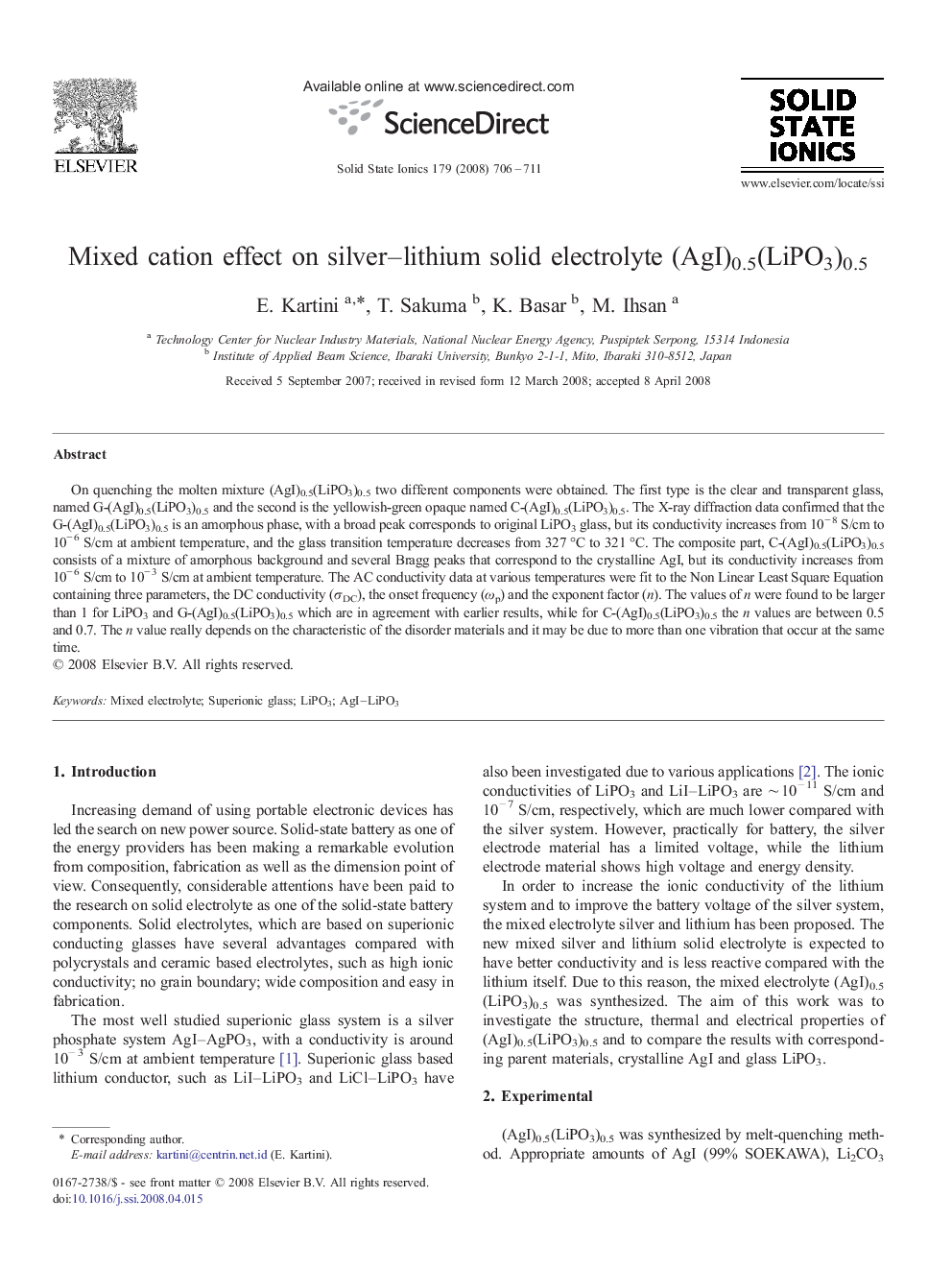| Article ID | Journal | Published Year | Pages | File Type |
|---|---|---|---|---|
| 1297247 | Solid State Ionics | 2008 | 6 Pages |
On quenching the molten mixture (AgI)0.5(LiPO3)0.5 two different components were obtained. The first type is the clear and transparent glass, named G-(AgI)0.5(LiPO3)0.5 and the second is the yellowish-green opaque named C-(AgI)0.5(LiPO3)0.5. The X-ray diffraction data confirmed that the G-(AgI)0.5(LiPO3)0.5 is an amorphous phase, with a broad peak corresponds to original LiPO3 glass, but its conductivity increases from 10− 8 S/cm to 10− 6 S/cm at ambient temperature, and the glass transition temperature decreases from 327 °C to 321 °C. The composite part, C-(AgI)0.5(LiPO3)0.5 consists of a mixture of amorphous background and several Bragg peaks that correspond to the crystalline AgI, but its conductivity increases from 10− 6 S/cm to 10− 3 S/cm at ambient temperature. The AC conductivity data at various temperatures were fit to the Non Linear Least Square Equation containing three parameters, the DC conductivity (σDC), the onset frequency (ωp) and the exponent factor (n). The values of n were found to be larger than 1 for LiPO3 and G-(AgI)0.5(LiPO3)0.5 which are in agreement with earlier results, while for C-(AgI)0.5(LiPO3)0.5 the n values are between 0.5 and 0.7. The n value really depends on the characteristic of the disorder materials and it may be due to more than one vibration that occur at the same time.
